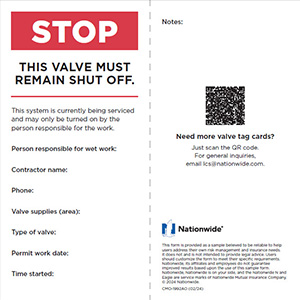Toolbox talk (1 minute) | Water Mitigation
Utilizing valve tags to prevent water damage
Simplifying your toolbox talks
What you need to know about utilizing valve tags
Confirm review of this toolbox talks article.
